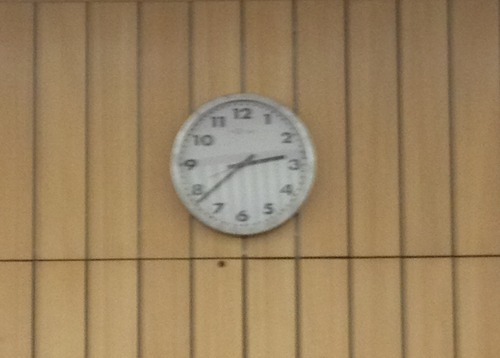It feels a tad ironic that I left London behind this morning clear and crisp and now sit in Vancouver, heavily shrouded in fog. Sherlock Holmes would love it that irony. The only fog I saw in London this past week was the fog of fatigue from the delegates in the Polar Code Working group.
Just on the off chance that any readers are of the opinion that IMO is dragging it’s feet on putting place a mandatory Polar Code, the attached photo should help dispel such pessimism. Wednesday’s PCWG deliberations continued from 0830 to 0230 Thursday morning. Working group members were back at it at 0830 Thursday. Rest assured, during this week’s SDC Sub-committee and PCWG meetings, the sessions have been long but for the most part productive. The PCWG completed formal discussions on Thursday and presented SDC1-WP4 to the plenary Friday afternoon. The week did NOT result in new binding code for shipping in polar waters but it was successful in substantially moving ahead towards that goal. Chief among the positive results was SDC’s acceptance of the recommendations for changes to MARPOL and SOLAS that are necessary to put a mandatory Polar Code into effect. In this mariner’s humble opinion that is a huge step considering the Polar Code concept was first floated in the 1990’s.
There are many pieces of the Polar Code that remain to be ironed out. Several outstanding elements have been forwarded to other sub-committees or working groups for either clarification or further development due to subject matter relevance. Still in question is the entirety of Chapter 13 on Manning and Certification. Three options for wording with somewhat similar focus have been referred to the new Sub-committee on Human Element Training and Watchkeeping that will hold it’s inaugural meeting the week of 17 February. This is an area of focus for the Nautical Institute, on whose behalf I was attending SDC1 as technical expert/observer. The NI supports the requirement for additional experience and training in operating within polar ice regimes that is part of all three options and eventually some sort of endorsement as Ice Navigator/Advisor to watchkeeping certificates of competency.
Other items requiring further work involve discussion in MEPC on shore side oil reception facilities at polar ports to support the general concept of “zero discharge tolerance”; and details related to technical requirements that should be considered by the new Sub-Committee on Navigation Communication and Search and Rescue.
Besides the agreement in principle of the instrument amendments already mentioned above, other positive results included agreements on Chapter 2 Polar Water Operation Manual, that along with the Polar Operations Certificate will provde guidance to ship’s crews on vessel capability, limitations, and additional considerations required operating in the polar environment; agreement on the definition and use of temperature in the Polar Code; machinery requirements under chapter 6; ship structure under chapter 3; fire safety and protection under chapter 8; stability and subdivision under chapter 4; operational safety under chapter 7; and life-saving appliances and arrangements under chapter 9.
The present timeline envisions that MEPC 66 will consider the SDC 1 outcomes and draft MARPOL amendments for possible adoption at MEPC 67, while MSC 93 and 94 will draft and consider SOLAS amendments. A great deal was achieved over the last week, however as much detail remains to be ironed out, I am not as confident as some that the target for approval of a mandatory Polar Code will come before the end of this year.

